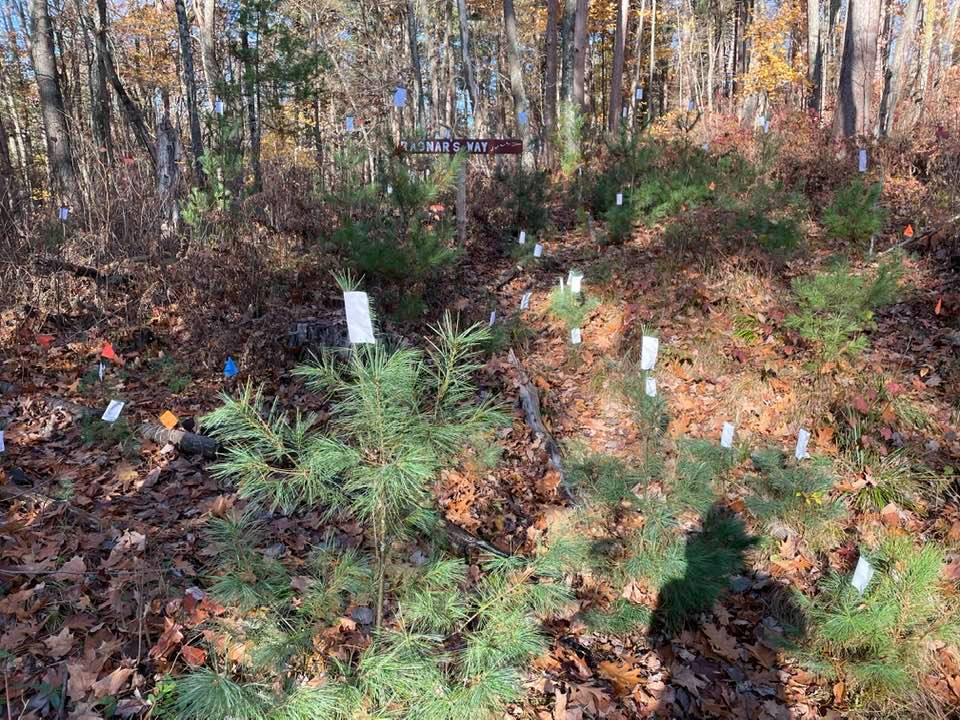NOVEMBER 8, 2021 – Over the weekend, I stapled bud caps onto another 400 white pine seedlings and saplings in the “tree garden” up at the lake. It’s been an annual project since I manually planted a few hundred seedlings in woodland acreage that’d been harvested seven years ago. The work is necessary to protect the leader buds (top of the tree) from winter browsing by deer. My first venture at this, five years ago, was limited to the 300 seedlings I’d planted the previous spring. Now I’m at over 900 bud caps, which includes approximately 600 “volunteers” in addition to the DNR nursery seedlings I planted originally.
The work is tedious but rewarding , and it’s been easier this fall than in some years, when bare-handed, I struggled in sub-freezing temps. This past weekend the mercury flirted with 60F.
The “bud cap” is a square of scrap paper that’s folded around the leader, then stapled in three places—each staple grabbing some needles for a better hold. If attached properly, the bud caps will survive winter snows. Having done their job over the cold months, the paper caps will disintegrate away with spring rains. Although the leader buds will outgrow the bud cap if the cap hasn’t disappeared beforehand, I manually remove the bud caps after the threat of browsing deer has passed (i.e. other edible vegetation is available).
In the case of seedlings, bud-capping is a knees-to-the-ground affair. Moreover, bud-capping the younger trees is often a dual operation—trimming away competing vegetation to give the seedlings an open shot at the sky come spring.
This work keeps me connected to the earth in the way traditional gardening does for avid green thumbs—hence the name I’ve assigned to the area under my arboreal care: the “tree garden.” As I worked this weekend, alone, silently for most of the daylight hours, I thought about a lot of things. Foremost was the COP26 summit in Glasgow.
If I lean heavily toward the youthful protesters shouting in the streets outside the conference, “Too little, too late!” I’m also aware of my own hypocrisy in the battle to save the planet. How did I travel from “primary” home to “secondary” home—and before I answer, what’s with having two homes, both heated with non-renewable fuel throughout the year? But how did I travel? Yes, via fossil fuel. And what about these trees? How much difference will they make in the mission to save the planet? Could I make a bigger dent by joining a volunteer organization and going door-to-door to spread the word, “Drive less, wear sweaters more; lobby elected officials to implement game-changing policies to slow the rate of global warming!”? Or to bring the question—and the solution—full circle, on a net basis would I be far more effective if I worked to reduce our household energy consumption by half?
As is the case in an interconnected world, solutions to so many challenges start and end with individual action, multiplied by the multitude.
(Remember to subscribe to this blog and receive notifications of new posts by email.)
© 2021 by Eric Nilsson
